Autism And Deafness

Introduction to Autism and Deafness
The intersection of autism spectrum disorder (ASD) and deafness is an area of growing research and clinical interest. While each condition has its unique characteristics, their co-occurrence presents complex challenges in diagnosis, intervention, and support. This article explores the prevalence, overlap, assessment methods, underlying mechanisms, and intervention strategies crucial for understanding and supporting individuals with both autism and deafness.
Prevalence and Overlap of Autism and Deafness
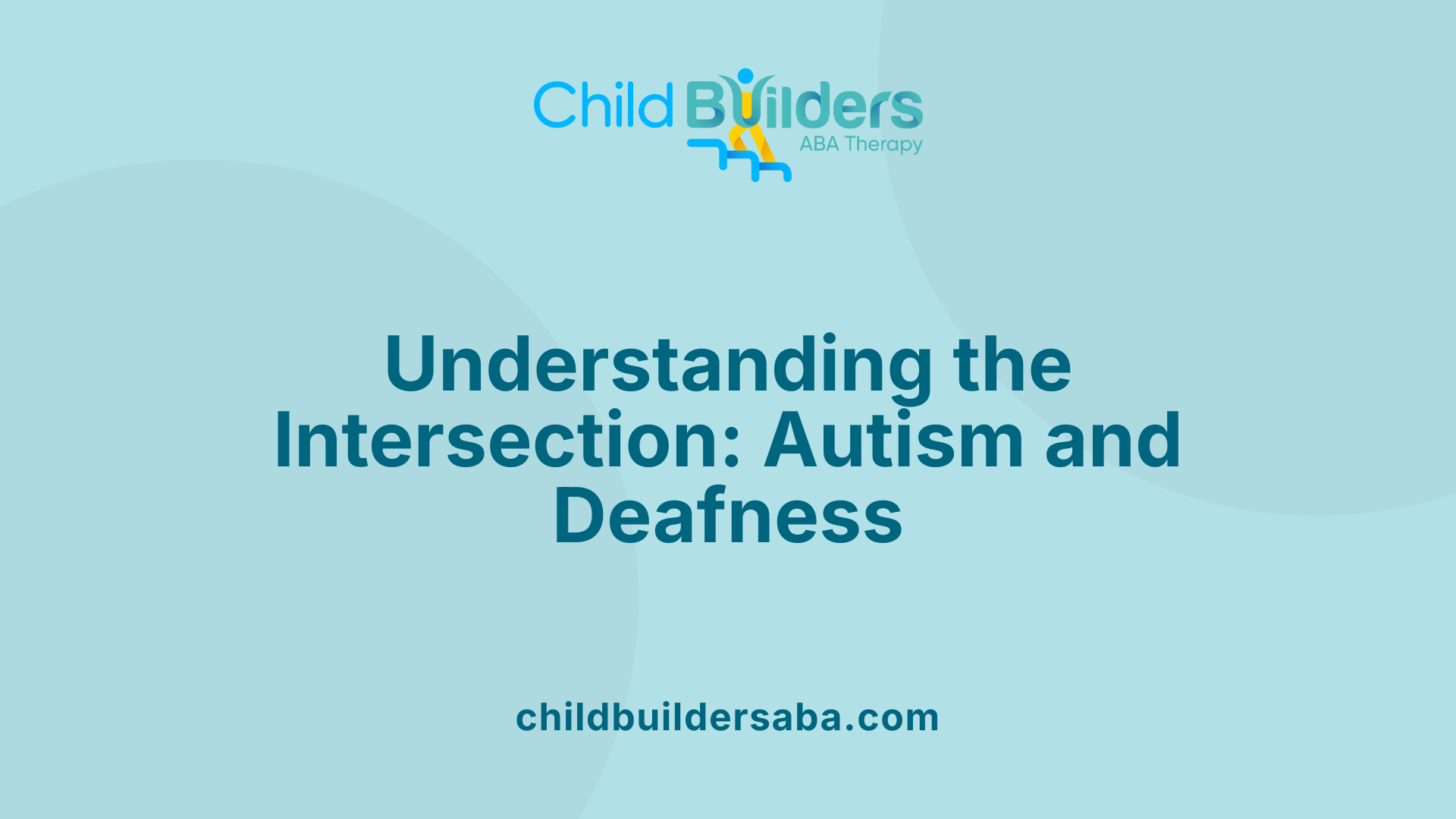
What is the relationship and overlap between autism and deafness?
The connection between autism spectrum disorder (ASD) and deafness involves complex interactions. Many individuals can experience both conditions simultaneously, which can complicate diagnosis and support strategies. Studies show that hearing impairments are more common among autistic individuals than in the general population, indicating possible shared biological mechanisms or vulnerabilities.
Autism is characterized mainly by difficulties in social communication, repetitive behaviors, and sensory sensitivities. Deafness, on the other hand, involves significant hearing loss, which may affect language development and social interaction. Despite being distinct conditions, their overlap is notable.
Sensory processing differences are a hallmark of autism. These include heightened sensitivities or atypical responses to sounds and other sensory inputs. Such differences can overlap with hearing difficulties, sometimes intensifying communication challenges. For example, autistic children may react strongly to certain sounds or have altered responses to auditory stimuli.
Recognizing how these conditions intersect is crucial for improving diagnosis and tailored interventions. Addressing both sensory processing and communication needs can lead to better developmental outcomes.
How prevalent is autism among children who are deaf or hard of hearing?
Research indicates that autism spectrum disorder is more common among children with hearing loss. Estimates suggest that between 4% to 9% of deaf or hard-of-hearing (D/HH) children also have ASD, compared to about 1.7% to 2% in the general population.
Furthermore, nearly half (about 50%) of autistic youths have altered hearing levels, a significant increase from the approximately 15% in non-autistic peers. This high co-occurrence underscores the importance of comprehensive screening and assessment in children with hearing impairment.
Early detection of autism in D/HH children is vital. It allows for timely interventions that support language development, social skills, and behavioral regulation, fostering better long-term outcomes.
| Condition | Prevalence in Population | Comments |
|---|---|---|
| Autism (general population) | 1.7% - 2% | Typical rates in children without specific disabilities |
| Autism in D/HH children | 4% - 9% | Higher than general population, indicating increased risk |
| Altered hearing levels in autistic youths | ~50% | Compared to 15% in non-autistic peers |
Understanding these intersections helps clinicians, educators, and families develop more effective support strategies and emphasizes the need for specialized assessment tools that can accurately identify autism in children with hearing loss.
Diagnosis Challenges and Assessment Tools in Dual Conditions
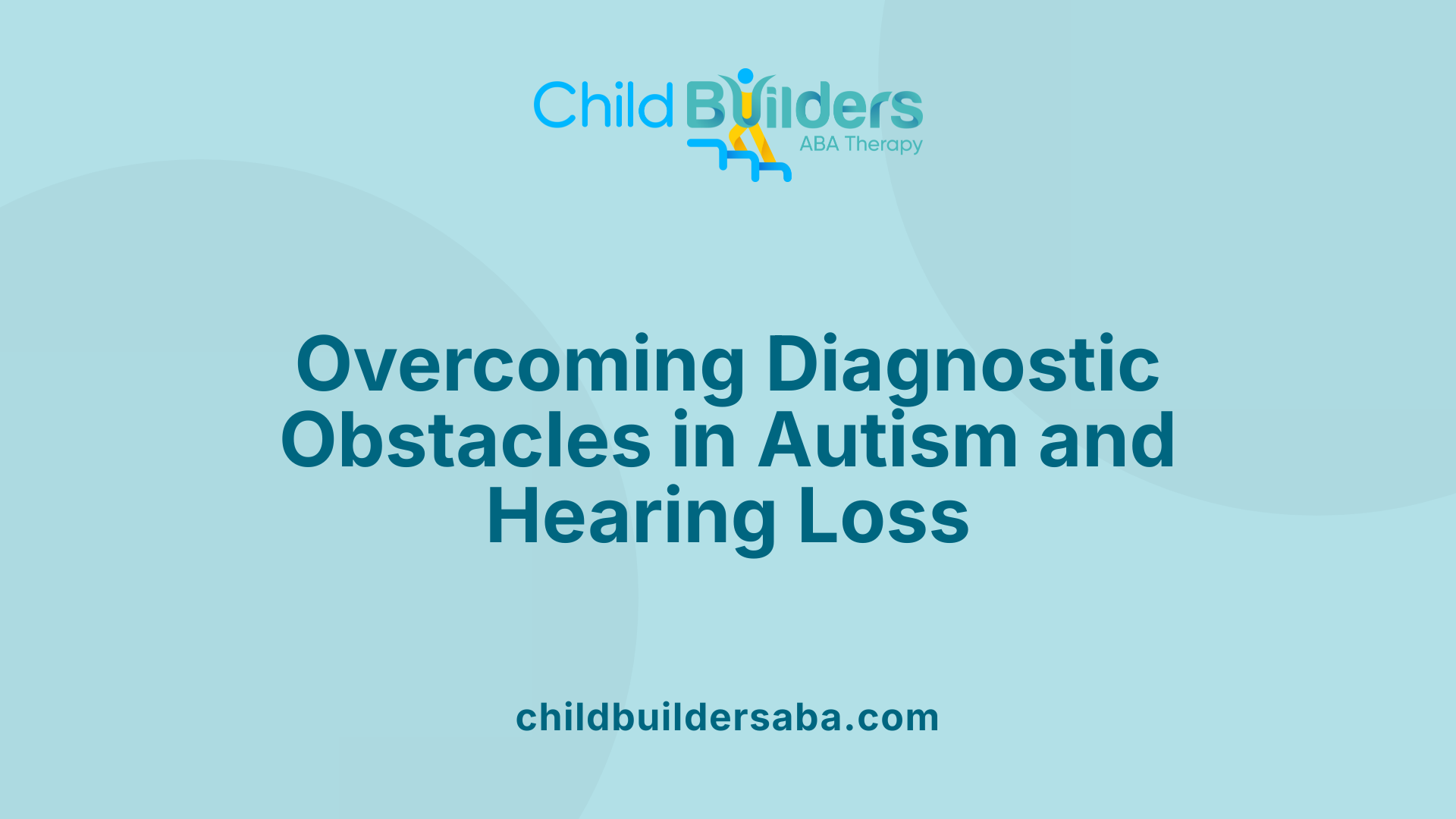
How does hearing loss impact autism diagnosis and early intervention?
Hearing loss can significantly complicate the diagnosis of autism because some symptoms, such as delayed language development and social communication challenges, overlap or mimic behaviors associated with both conditions. It can also mask or distort specific signs of autism, making accurate assessment more difficult. Additionally, children with autism may experience auditory processing disorders or sound sensitivities, further complicating their hearing profiles and intervention strategies.
Early detection of hearing problems, including audiological assessments that consider the child's communication methods, is crucial for distinguishing between hearing impairment and autism symptoms. Integrating comprehensive evaluations ensures that children receive appropriate support and interventions tailored to their specific needs, ultimately improving developmental outcomes.
What are the limitations of traditional screening tools for autism in children with hearing impairment?
Standard autism screening tools like the M-CHAT and Social Communication Questionnaire often perform poorly in children with hearing loss because they were not originally designed or validated for this population. These tools can misinterpret language delays or social interaction differences caused by hearing impairment as signs of autism. As a result, there is a risk of false positives—incorrectly diagnosing autism—or, conversely, missing autism diagnoses altogether.
To address these challenges, clinicians adapt assessment methods through modifications in scoring and task execution, such as in the Autism Diagnostic Observation Schedule, Second Edition (ADOS-2), and the Autism Diagnostic Interview-Revised (ADI-R). These adaptations may include alternative scoring systems and task modifications to better suit children with hearing loss.
Moreover, multidisciplinary teams comprising audiologists, speech-language pathologists, psychologists, and other specialists are essential for conducting comprehensive evaluations. During the COVID-19 pandemic, assessment practices shifted towards virtual formats, employing caregiver-mediated tools like TELE-ASD-PEDS and CARS-2, which maintain assessment accuracy in remote settings.
The importance of a multidisciplinary approach
Effective diagnosis of autism in children with hearing loss relies heavily on a collaborative approach. Teams that include audiologists, speech therapists, psychologists, and educators can collectively interpret behavioral cues, audiological data, and developmental histories.
This inclusive approach is especially crucial during pandemic-related restrictions, where virtual assessments demand innovative solutions and caregiver involvement to ensure accurate diagnostics. Regular monitoring of language, play, and social interactions further supports early detection, leading to timely interventions.
| Assessment Tool | Adaptations for D/HH | Limitations | Usage Context |
|---|---|---|---|
| M-CHAT | Not validated | Poor sensitivity | Initial screening, less effective in D/HH |
| Social Communication Questionnaire | Not validated | Limited accuracy | Screening, needs adaptation |
| ADOS-2 | Scoring modifications | Not originally designed for D/HH | Gold standard assessment, adapted to include modifications |
| ADI-R | Task modifications | Less validated in D/HH | Developmental history assessment |
| TELE-ASD-PEDS | Caregiver-mediated | Validation ongoing | Remote screening during COVID-19 |
| CARS-2 | Modified scoring | Limited validation | Pediatric assessment in remote/different settings |
Understanding these nuances ensures that children with hearing impairment are accurately diagnosed and receive intervention plans suited to both their hearing status and autism spectrum needs.
Underlying Mechanisms and Scientific Research
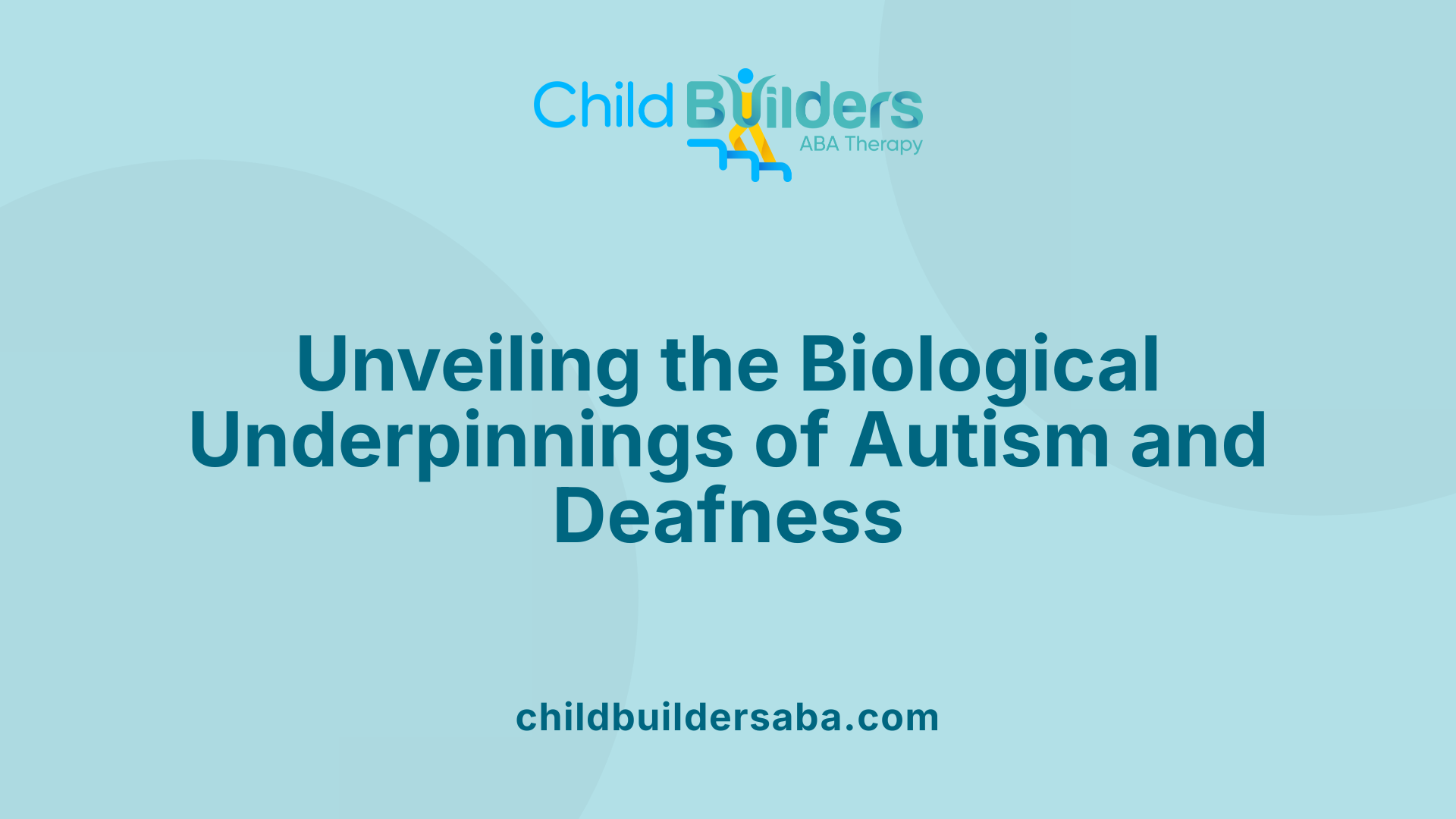 Research indicates that autism Spectrum Disorder (ASD) often involves abnormalities in the auditory nervous system, evidenced by studies using animal models. Mouse models of ASD, particularly those with mutations in specific genes such as MEF2C, have revealed notable auditory nerve defects. These include mild hearing loss, nerve degeneration, and glia activation, which are signs of neuroinflammation. For instance, in mice carrying MEF2C mutations, researchers observed cellular degeneration along with inflammation and immune responses affecting the auditory nerve. These findings emphasize that sensory organ and neural pathway integrity are crucial components in the neurobiology of ASD.
Research indicates that autism Spectrum Disorder (ASD) often involves abnormalities in the auditory nervous system, evidenced by studies using animal models. Mouse models of ASD, particularly those with mutations in specific genes such as MEF2C, have revealed notable auditory nerve defects. These include mild hearing loss, nerve degeneration, and glia activation, which are signs of neuroinflammation. For instance, in mice carrying MEF2C mutations, researchers observed cellular degeneration along with inflammation and immune responses affecting the auditory nerve. These findings emphasize that sensory organ and neural pathway integrity are crucial components in the neurobiology of ASD.
Understanding these biological interactions provides insight into how auditory nerve dysfunction can contribute to or exacerbate ASD symptoms. The involvement of immune responses, particularly neuroinflammation, suggests that immune system interactions play a vital role in maintaining nerve health. Disruptions in this process may lead to sensory processing issues common in ASD, including hearing sensitivities or impairments.
This research also underscores the importance of sensory development in understanding autism. Abnormalities in auditory nerve function could influence how children process sounds and language, affecting communication and social interaction. Recognizing these underlying mechanisms opens new avenues for targeted treatments and diagnostic tools.
Future research directions include further exploration of genetic factors like MEF2C mutations and their impact on sensory and immune pathways. Scientists aim to delineate how neuroimmune interactions influence not only auditory pathways but broader neurodevelopmental processes.
In sum, the scientific evidence from animal models supports a model in which genetic vulnerabilities and immune responses substantially shape auditory nerve health and contribute to ASD. These insights are critical in developing comprehensive approaches for diagnosing and treating children with co-occurring autism and hearing issues, fostering better understanding of shared biological pathways.
Impact on Development and Communication in Dual Diagnosis
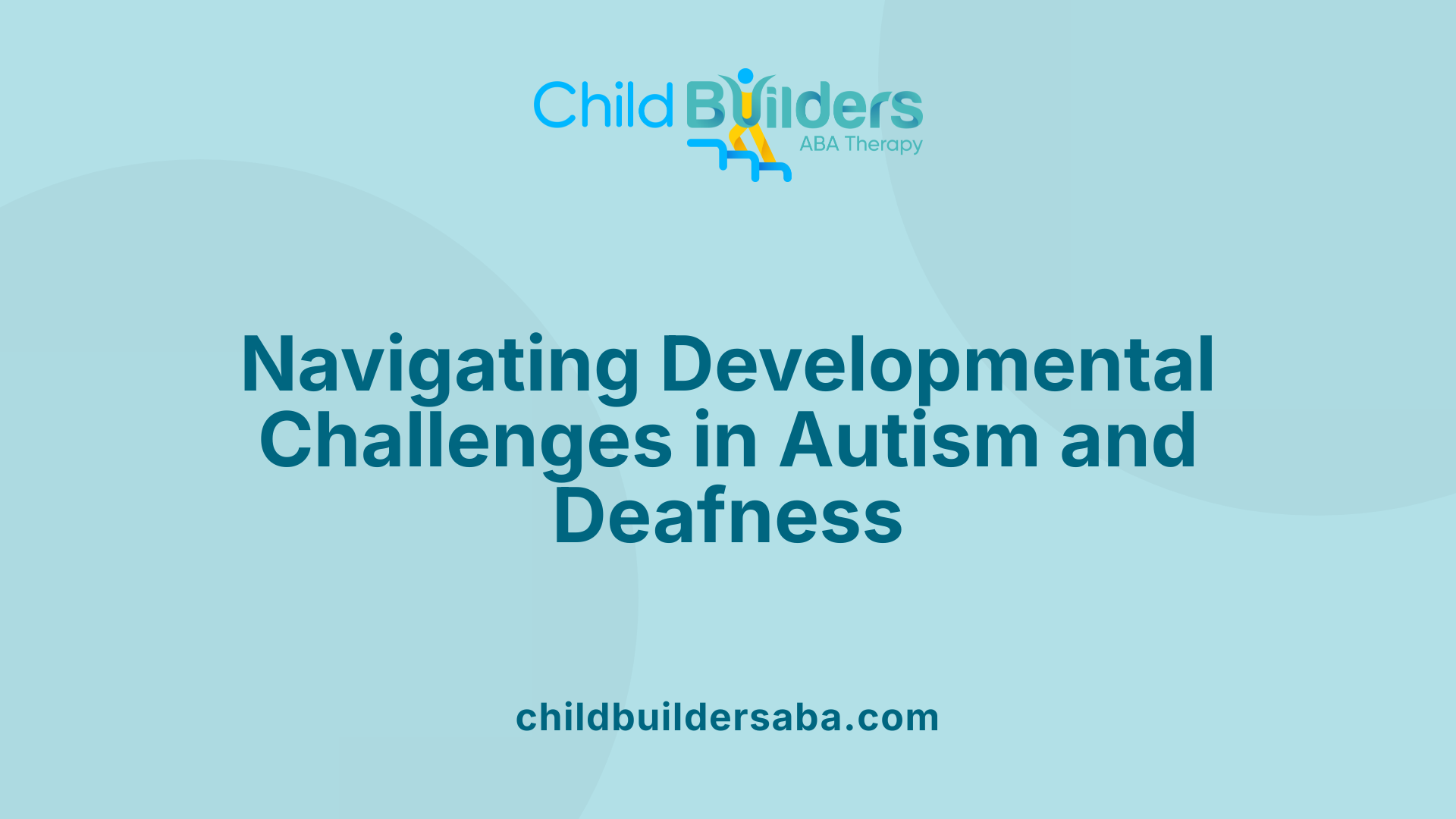
How does autism affect speech and language development and communication?
Autism has a profound influence on speech and language development, especially in deaf children who already face unique challenges in communication. Children with autism may experience delays across multiple language domains, including pragmatics (social use of language), semantics (meaning), syntax (sentence structure), phonology (sound systems), and morphology (word forms). Some may be non-verbal, while others speak fluently but with atypical patterns, such as echolalia or unusual intonations. Difficulties often extend to understanding and producing speech, which can hinder social interactions and the ability to share interests effectively.
These challenges are often intertwined with co-occurring issues like speech sound disorders or apraxia, complicating diagnosis and intervention. Tailored communication strategies, which may include augmentative and alternative communication (AAC), are essential. Early support from speech-language pathologists and consistent practice in naturalistic settings can foster meaningful language use and social engagement, helping children navigate their environment more effectively.
What are the effects of language deprivation in deaf children with autism?
Language deprivation occurs when a deaf child does not have access to a fully accessible language environment—be it sign language or spoken language supported by technology—during critical developmental periods. In children with autism, this deprivation can have devastating long-term effects on language, cognitive, and social-emotional development.
Without early exposure to an accessible language, these children often develop severe delays in social cognition and Theory of Mind—the ability to understand others' mental states. Such delays impair their capacity to form relationships, understand social cues, and participate in shared activities. Behaviorally, language deprivation can lead to increased social withdrawal, frustration, and difficulty in learning new skills.
Conversely, ensuring early and consistent access to a primary language, whether signed or spoken, can promote better social integration, emotional well-being, and cognitive growth. Early intervention tailored to linguistic needs is crucial to mitigate the adverse effects of deprivation and to support optimal development.
Role of early intervention and tailored communication strategies
Early diagnosis and intervention are vital for children with both autism and deafness. Customized strategies that emphasize accessible communication—such as signing, spoken language with assistive devices, or a combination—are critical. Multidisciplinary teams often develop individualized education and support plans that incorporate visual supports, social stories, and structured routines to enhance understanding and reduce anxiety.
Use of sign language, spoken language, and assistive devices
Sign language provides a natural and accessible means of communication for deaf children, including those with autism. When introduced early, it fosters social interaction and cognitive development. Spoken language, supported by hearing aids or cochlear implants, can also be effective if the child’s auditory abilities permit and if it aligns with their preferences and environment. Assistive devices and technology, like cochlear implants and communication apps, further support language acquisition and daily functioning. Adapting communication methods to each child's needs ensures they receive maximum support for social, emotional, and language development.
Challenges faced by deaf children with autism in social integration
Deaf children with autism may encounter unique hurdles in social integration. Difficulties in understanding social cues, challenges with joint attention, and sensitivities to sensory stimuli can impede forming peer relationships. They may also experience misunderstandings due to overlapping behaviors, such as withdrawal or repetitive actions, which can be misinterpreted. Promoting social skills in this population requires intentional teaching, use of visual aids, peer mentoring, and family involvement. Support services aimed at fostering inclusive environments help improve social participation and emotional health.
| Aspect | Challenges | Strategies | Notes |
|---|---|---|---|
| Speech & Language | Delays & atypical speech patterns | Early speech therapy, AAC | Tailored interventions needed |
| Social Skills | Difficulty with social cues & interactions | Visual supports, social stories | Peer programs beneficial |
| Emotional Regulation | Sensory sensitivities & meltdowns | Routine, sensory breaks | Understanding triggers critical |
| Communication Methods | Overlap of signs & behaviors | Sign language, assistive tech | Personalized communication plans |
Strategies for Supporting Individuals with Both Conditions
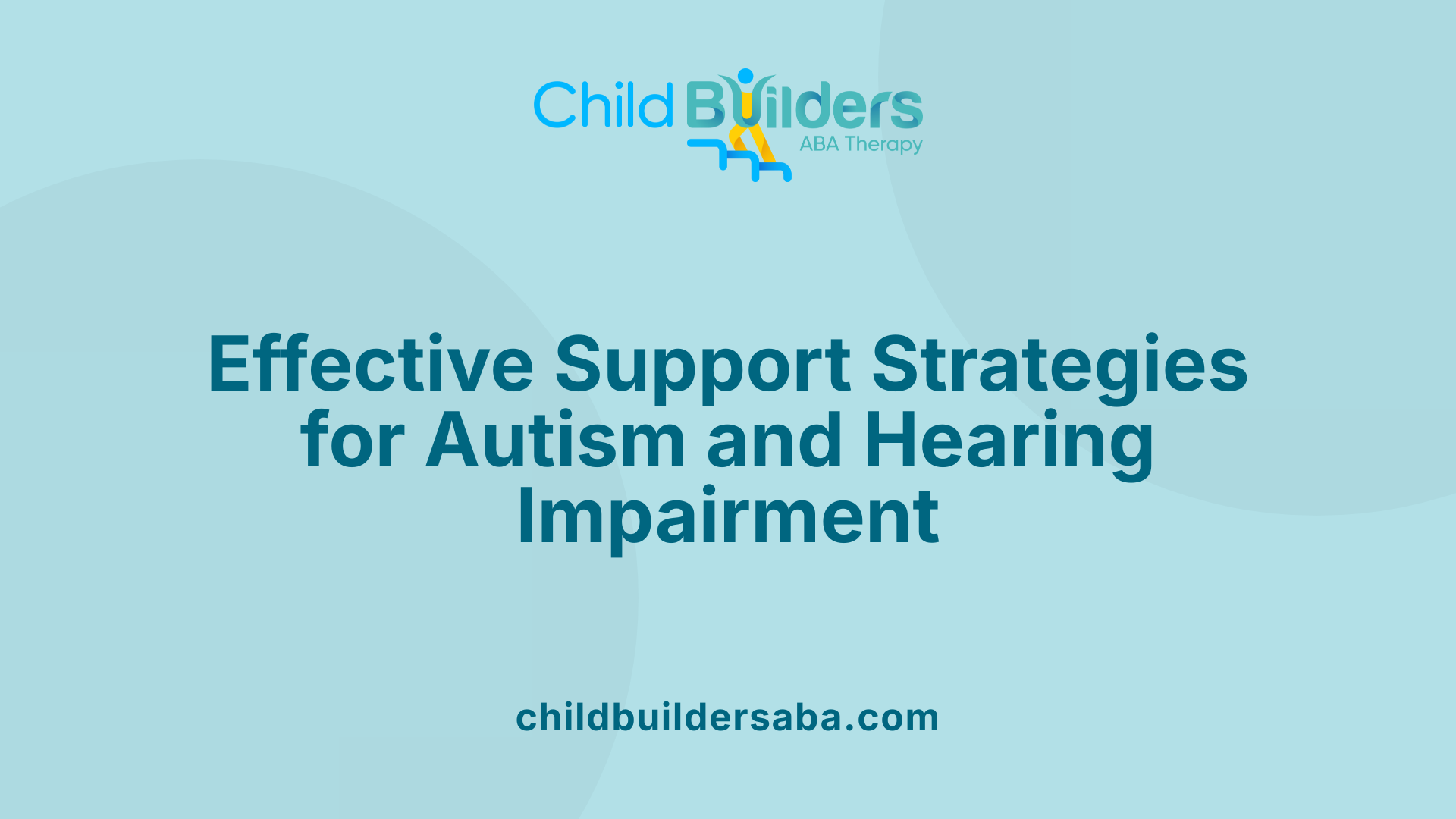
What are effective interventions and support strategies for individuals with both autism and hearing impairments?
Supporting individuals with autism and hearing loss requires personalized approaches grounded in thorough assessments of their unique abilities and challenges. It involves early, comprehensive interventions that combine speech and language therapy with assistive listening devices such as hearing aids or cochlear implants. Behavioral strategies like Applied Behavioral Analysis (ABA), Functional Communication Training (FCT), and social skills development are integral parts of support. Techniques like DIR/FLOOR TIME™ foster socialization, while sensory integration therapies help manage sensory sensitivities.
Early intervention—preferably before preschool age—is crucial for improving developmental outcomes. These programs often include not only therapy but also training for families, enabling them to reinforce strategies at home. Continuous monitoring and adjustment of intervention plans ensure they meet evolving needs, maximizing developmental benefits.
How can visual supports and social stories aid communication?
Visual aids and social stories serve as powerful tools to enhance communication for children with autism and hearing impairment. Picture schedules, visual communication boards, and structured social stories provide concrete representations of routines, social cues, and expectations. These supports help reduce anxiety, clarify social interactions, and serve as alternative means of understanding when auditory processing is limited.
Using visual supports consistently across settings—home, school, therapy—builds familiarity and confidence. They promote better understanding of social norms, assist in managing behaviors, and foster independence. Visual tools effectively bridge gaps where speech and auditory skills may lag, ultimately supporting more meaningful engagement and social interaction.
What is the future outlook for research in autism and deafness?
The future of research in autism and deafness focuses on creating more accurate diagnostic tools and tailored interventions. Advances in genetics, neuroimaging, and immunological studies are expected to shed light on shared biological pathways involved in both conditions.
Efforts are underway to develop culturally sensitive assessments and technology-enabled diagnostics, such as virtual evaluations and assistive communication devices, to improve access and precision. Longitudinal studies will help understand how autism and hearing loss develop over time and influence each other.
Increased awareness and specialized training for professionals will enhance early detection and individualized support plans. Overall, ongoing research aims to improve developmental, social, and communication outcomes for this underserved and often overlooked population.
Summary and Moving Forward
Autism and deafness are distinct yet often overlapping conditions that require nuanced understanding and collaborative, individualized approaches. Advances in diagnostic techniques, research, and support strategies continue to improve outcomes for affected individuals. Early, tailored intervention—leveraging multidisciplinary teams, technology, and family support—is essential for fostering communication, social skills, and emotional wellbeing. Increased awareness, specialized training, and ongoing research hold promise for better understanding this complex intersection, ensuring that individuals with dual diagnoses receive the care, support, and opportunities they deserve to thrive in diverse environments.
References
- Assessing Autism in Deaf/Hard-of-Hearing Youths: Interdisciplinary ...
- Beyond the brain: A link between hearing loss and autism spectrum ...
- How autism and auditory processing disorder affect hearing
- Gallaudet psychology expert raises awareness about autism in deaf ...
- Audiometric profiles in Autism Spectrum Disorders: Does subclinical ...
- The Deaf Autism Project - Boston University
- When It's More Than Hearing Loss: Be attuned to signs of autism ...
- Autism and Auditory Processing Disorder - Verywell Health



.jpg)

































































































